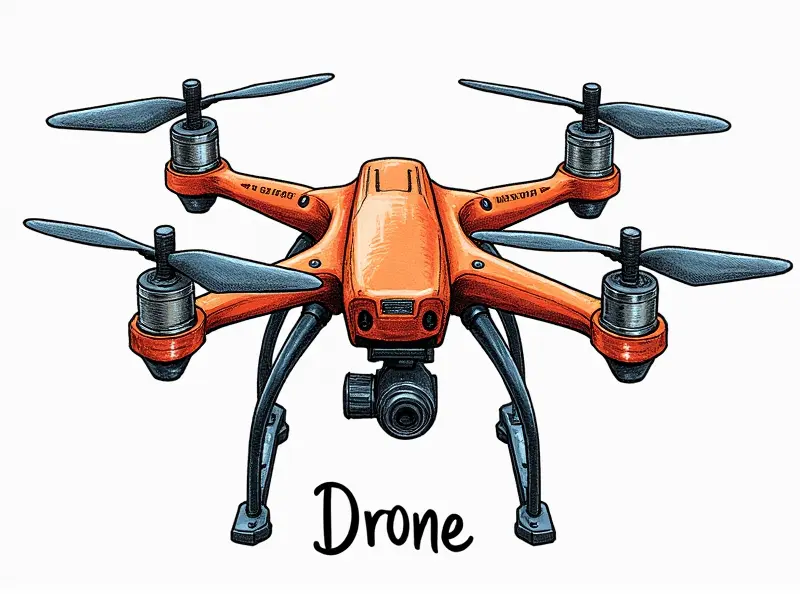Can I fly FPV in rain?

Is It Safe to Fly FPV in Rain?
Flying a First-Person View (FPV) drone in the rain can be risky and is generally not recommended. The primary concern is the potential damage to your drone's electronics, which are highly sensitive to moisture. However, there are certain conditions where you might consider flying in light rain.
Can You Fly FPV Drone in Light Rain?
Flying an FPV drone in light rain can be tempting for enthusiasts who want to continue their hobby despite inclement weather. While it may seem manageable, even a slight drizzle poses significant risks that should not be underestimated.
Tips for Flying FPV in Wet Weather
- Waterproofing: Use waterproof cases and covers to protect your drone's components from moisture.
- Battery Management: Ensure batteries are dry before use, as wet batteries can short circuit or corrode quickly.
- Flight Testing: Conduct a pre-flight test in dry conditions to ensure all systems work correctly.
How Rain Affects FPV Drone Flight
Rain can significantly impact the performance of your drone. Water droplets on propellers and camera lenses can reduce lift efficiency and compromise video quality, making it difficult to maintain control during flight.
Electrical Components Vulnerability
- Sensors: Moisture can interfere with sensor accuracy, leading to erratic behavior.
- Battery Connections: Wet connections can cause short circuits and permanent damage.
- Camera: Water on the lens can distort images and reduce visibility during FPV flight.
Should You Avoid FPV Flight in Rain?
Avoiding FPV flights in rain is advisable to prevent costly repairs or total loss of your drone. The risks far outweigh any potential benefits, especially for recreational flying.
Risks of Flying FPV Drones in Light Rain
- Electrical Damage: Moisture can cause irreversible damage to electronic components.
- Reduced Performance: Water on propellers and sensors reduces lift and control.
- Visibility Issues: Wet lenses can distort the FPV video feed, making it hard to navigate safely.
Can FPV Racing Drones Handle Light Rain?
Racing drones are designed for high-speed performance but not necessarily for wet conditions. Even light rain can compromise their aerodynamics and increase the risk of accidents due to reduced visibility and control.
Impact on Aerodynamics
- Lift Efficiency: Water droplets on propellers reduce lift, affecting flight stability.
- Drag Increase: Wet surfaces increase drag, impacting speed and maneuverability.
Is It Worth Risking FPV Flight in Rain?
The risks associated with flying an FPV drone in rain often outweigh the benefits. The potential for damage to your equipment is high, and the enjoyment of flight can be severely diminished by reduced performance and safety concerns.
Evaluation of Risks vs Benefits
- Equipment Damage: High risk of permanent damage to electronics.
- Safety Concerns: Increased likelihood of crashes due to poor visibility and control.
- No Added Enjoyment: Reduced performance makes flying less enjoyable and more stressful.
Flying FPV: Considerations for Rainy Conditions
When faced with rainy conditions, it's essential to consider the safety of your drone and yourself. Opting for indoor flight or waiting until weather improves is a prudent choice that protects both your investment and personal well-being.
Safety Precautions in Wet Weather
- Indoor Flight: Utilize indoor spaces like gyms or large halls to maintain practice and skills.
- Weather Monitoring: Stay informed about weather forecasts to plan flights accordingly.
- Backup Equipment: Have spare parts ready in case of unexpected damage.
How Weather Affects FPV Drone Flight
The weather plays a crucial role in determining the feasibility and safety of FPV drone flight. Understanding how different weather conditions affect your drone can help you make informed decisions about when to fly.
General Weather Considerations
- Rain: Avoid flying in rain due to high risk of damage.
- Fog: Reduced visibility poses significant safety risks.
- Wind: Strong winds can destabilize flight and increase the likelihood of crashes.
Should You Avoid Flying FPV in Wet Weather?
Avoiding flying FPV drones in wet weather is crucial to ensure the longevity and safety of your equipment. The risks associated with moisture exposure far outweigh any short-term benefits, making it a wise decision to wait for better conditions.
Conclusion
Flying an FPV drone in rain or other wet conditions poses significant risks that can lead to irreparable damage and compromise the safety of your equipment. While it may be tempting to continue flying regardless of weather, prioritizing the protection of your investment is paramount. By adhering to safe practices and waiting for favorable conditions, you ensure a longer lifespan for your drone and continued enjoyment of this exhilarating hobby.

